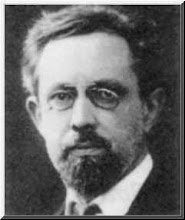Last night BBC4 - really the only channel worth watching these days - repeated David Hockney's Secret Knowledge: Rediscovering the Lost Techniques of the Old Masters in which he explains what has come to be known as the Hockney-Falco thesis. The question he addresses is why after roughly 1420 did the objects depicted in European paintings suddenly look so much more like the things they were meant to be? Was it just that artists became better at painting? Well, in a sense, yes according to Hockney, but not because they simply improved their skill in handling the brushes. His argument is that artists like Van Eyck used mirrors as lenses to project images of objects onto paper or parchment which could then be traced. The limitations of the technology explain the relatively small size of many paintings in this era and the somewhat strange, apparently section by section, construction of some larger canvasses. They also explain otherwise curious 'out of focus' patches in the depiction of highly decorated cloths and fabrics. I'm no art historian and I gather that the thesis is controversial - though less so for the 16th Century where there is apparently documentary evidence of optical lenses being used by artists. Nevertheless I found the programme gripping for the way it showed a highly intelligent man hitting on an intriguing idea and then following up leads wherever they took him. OK it isn't Popperian science and there is surely a lot of confirmation bias in his hunt for evidence, but it is plausible conjecture which is the starting point of all knowledge discovery and great television to boot.
For more on the Hockney-Falco thesis see: http://en.wikipedia.org/wiki/Hockney-Falco_thesis
For more on the Hockney-Falco thesis see: http://en.wikipedia.org/wiki/Hockney-Falco_thesis









No comments:
Post a Comment